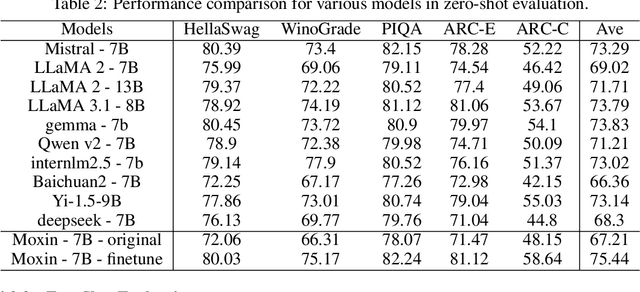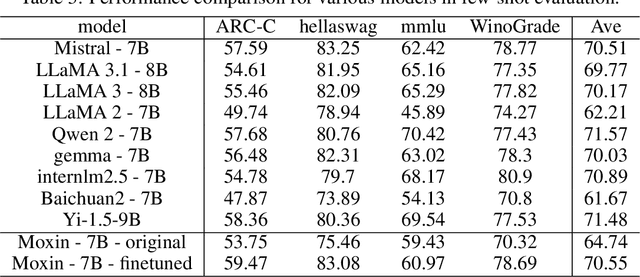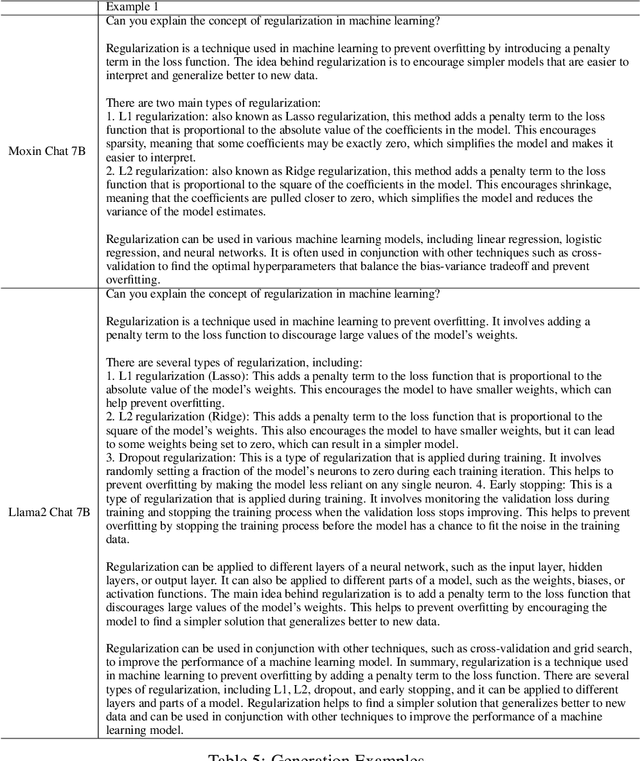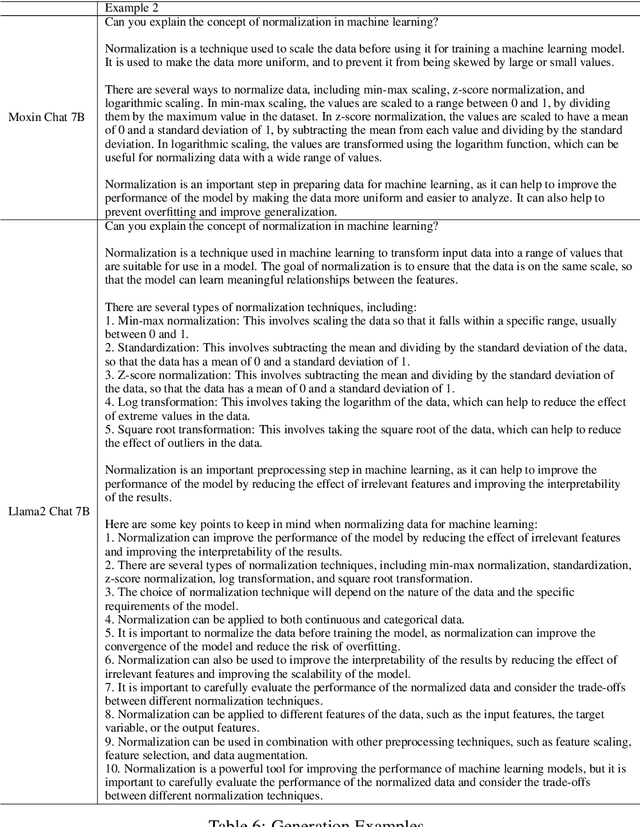Xuan Shen
QuartDepth: Post-Training Quantization for Real-Time Depth Estimation on the Edge
Mar 20, 2025Abstract:Monocular Depth Estimation (MDE) has emerged as a pivotal task in computer vision, supporting numerous real-world applications. However, deploying accurate depth estimation models on resource-limited edge devices, especially Application-Specific Integrated Circuits (ASICs), is challenging due to the high computational and memory demands. Recent advancements in foundational depth estimation deliver impressive results but further amplify the difficulty of deployment on ASICs. To address this, we propose QuartDepth which adopts post-training quantization to quantize MDE models with hardware accelerations for ASICs. Our approach involves quantizing both weights and activations to 4-bit precision, reducing the model size and computation cost. To mitigate the performance degradation, we introduce activation polishing and compensation algorithm applied before and after activation quantization, as well as a weight reconstruction method for minimizing errors in weight quantization. Furthermore, we design a flexible and programmable hardware accelerator by supporting kernel fusion and customized instruction programmability, enhancing throughput and efficiency. Experimental results demonstrate that our framework achieves competitive accuracy while enabling fast inference and higher energy efficiency on ASICs, bridging the gap between high-performance depth estimation and practical edge-device applicability. Code: https://github.com/shawnricecake/quart-depth
Efficient Reasoning with Hidden Thinking
Jan 31, 2025Abstract:Chain-of-Thought (CoT) reasoning has become a powerful framework for improving complex problem-solving capabilities in Multimodal Large Language Models (MLLMs). However, the verbose nature of textual reasoning introduces significant inefficiencies. In this work, we propose $\textbf{Heima}$ (as hidden llama), an efficient reasoning framework that leverages reasoning CoTs at hidden latent space. We design the Heima Encoder to condense each intermediate CoT into a compact, higher-level hidden representation using a single thinking token, effectively minimizing verbosity and reducing the overall number of tokens required during the reasoning process. Meanwhile, we design corresponding Heima Decoder with traditional Large Language Models (LLMs) to adaptively interpret the hidden representations into variable-length textual sequence, reconstructing reasoning processes that closely resemble the original CoTs. Experimental results across diverse reasoning MLLM benchmarks demonstrate that Heima model achieves higher generation efficiency while maintaining or even better zero-shot task accuracy. Moreover, the effective reconstruction of multimodal reasoning processes with Heima Decoder validates both the robustness and interpretability of our approach.
RoRA: Efficient Fine-Tuning of LLM with Reliability Optimization for Rank Adaptation
Jan 08, 2025



Abstract:Fine-tuning helps large language models (LLM) recover degraded information and enhance task performance.Although Low-Rank Adaptation (LoRA) is widely used and effective for fine-tuning, we have observed that its scaling factor can limit or even reduce performance as the rank size increases. To address this issue, we propose RoRA (Rank-adaptive Reliability Optimization), a simple yet effective method for optimizing LoRA's scaling factor. By replacing $\alpha/r$ with $\alpha/\sqrt{r}$, RoRA ensures improved performance as rank size increases. Moreover, RoRA enhances low-rank adaptation in fine-tuning uncompressed models and excels in the more challenging task of accuracy recovery when fine-tuning pruned models. Extensive experiments demonstrate the effectiveness of RoRA in fine-tuning both uncompressed and pruned models. RoRA surpasses the state-of-the-art (SOTA) in average accuracy and robustness on LLaMA-7B/13B, LLaMA2-7B, and LLaMA3-8B, specifically outperforming LoRA and DoRA by 6.5% and 2.9% on LLaMA-7B, respectively. In pruned model fine-tuning, RoRA shows significant advantages; for SHEARED-LLAMA-1.3, a LLaMA-7B with 81.4% pruning, RoRA achieves 5.7% higher average accuracy than LoRA and 3.9% higher than DoRA.
Numerical Pruning for Efficient Autoregressive Models
Dec 17, 2024



Abstract:Transformers have emerged as the leading architecture in deep learning, proving to be versatile and highly effective across diverse domains beyond language and image processing. However, their impressive performance often incurs high computational costs due to their substantial model size. This paper focuses on compressing decoder-only transformer-based autoregressive models through structural weight pruning to improve the model efficiency while preserving performance for both language and image generation tasks. Specifically, we propose a training-free pruning method that calculates a numerical score with Newton's method for the Attention and MLP modules, respectively. Besides, we further propose another compensation algorithm to recover the pruned model for better performance. To verify the effectiveness of our method, we provide both theoretical support and extensive experiments. Our experiments show that our method achieves state-of-the-art performance with reduced memory usage and faster generation speeds on GPUs.
LazyDiT: Lazy Learning for the Acceleration of Diffusion Transformers
Dec 17, 2024Abstract:Diffusion Transformers have emerged as the preeminent models for a wide array of generative tasks, demonstrating superior performance and efficacy across various applications. The promising results come at the cost of slow inference, as each denoising step requires running the whole transformer model with a large amount of parameters. In this paper, we show that performing the full computation of the model at each diffusion step is unnecessary, as some computations can be skipped by lazily reusing the results of previous steps. Furthermore, we show that the lower bound of similarity between outputs at consecutive steps is notably high, and this similarity can be linearly approximated using the inputs. To verify our demonstrations, we propose the \textbf{LazyDiT}, a lazy learning framework that efficiently leverages cached results from earlier steps to skip redundant computations. Specifically, we incorporate lazy learning layers into the model, effectively trained to maximize laziness, enabling dynamic skipping of redundant computations. Experimental results show that LazyDiT outperforms the DDIM sampler across multiple diffusion transformer models at various resolutions. Furthermore, we implement our method on mobile devices, achieving better performance than DDIM with similar latency.
Fully Open Source Moxin-7B Technical Report
Dec 08, 2024



Abstract:Recently, Large Language Models (LLMs) have undergone a significant transformation, marked by a rapid rise in both their popularity and capabilities. Leading this evolution are proprietary LLMs like GPT-4 and GPT-o1, which have captured widespread attention in the AI community due to their remarkable performance and versatility. Simultaneously, open-source LLMs, such as LLaMA and Mistral, have made great contributions to the ever-increasing popularity of LLMs due to the ease to customize and deploy the models across diverse applications. Although open-source LLMs present unprecedented opportunities for innovation and research, the commercialization of LLMs has raised concerns about transparency, reproducibility, and safety. Many open-source LLMs fail to meet fundamental transparency requirements by withholding essential components like training code and data, and some use restrictive licenses whilst claiming to be "open-source," which may hinder further innovations on LLMs. To mitigate this issue, we introduce Moxin 7B, a fully open-source LLM developed in accordance with the Model Openness Framework (MOF), a ranked classification system that evaluates AI models based on model completeness and openness, adhering to principles of open science, open source, open data, and open access. Our model achieves the highest MOF classification level of "open science" through the comprehensive release of pre-training code and configurations, training and fine-tuning datasets, and intermediate and final checkpoints. Experiments show that our model achieves superior performance in zero-shot evaluation compared with popular 7B models and performs competitively in few-shot evaluation.
A Survey of Small Language Models
Oct 25, 2024


Abstract:Small Language Models (SLMs) have become increasingly important due to their efficiency and performance to perform various language tasks with minimal computational resources, making them ideal for various settings including on-device, mobile, edge devices, among many others. In this article, we present a comprehensive survey on SLMs, focusing on their architectures, training techniques, and model compression techniques. We propose a novel taxonomy for categorizing the methods used to optimize SLMs, including model compression, pruning, and quantization techniques. We summarize the benchmark datasets that are useful for benchmarking SLMs along with the evaluation metrics commonly used. Additionally, we highlight key open challenges that remain to be addressed. Our survey aims to serve as a valuable resource for researchers and practitioners interested in developing and deploying small yet efficient language models.
Pruning Foundation Models for High Accuracy without Retraining
Oct 21, 2024


Abstract:Despite the superior performance, it is challenging to deploy foundation models or large language models (LLMs) due to their massive parameters and computations. While pruning is a promising technique to reduce model size and accelerate the inference, the traditional pruning techniques can hardly be applied for LLMs as they need to finetune the model on the full dataset with multiple epochs consuming massive data and hardware resources. To deal with this problem, post-training pruning methods are proposed to prune LLMs in one-shot without retraining. However, their accuracy after pruning may suffer from certain performance degradation due to the lack of retraining with massive data. To address this issue, in this paper, we first formulate the post-training problem for layer-wise LLM compression to simultaneously prune multiple weights in LLMs. Next, we provide an optimal solution for this problem and design our post-training pruning algorithm for both unstructured and semi-structured sparsity. Our extensive experiments demonstrate the superior performance of the proposed methods in comparison to SOTA baselines across various LLM families including transformer-based LLMs and Mamba-based LLMs. Code link: https://github.com/piuzha/APT
Rethinking Token Reduction for State Space Models
Oct 16, 2024



Abstract:Recent advancements in State Space Models (SSMs) have attracted significant interest, particularly in models optimized for parallel training and handling long-range dependencies. Architectures like Mamba have scaled to billions of parameters with selective SSM. To facilitate broader applications using Mamba, exploring its efficiency is crucial. While token reduction techniques offer a straightforward post-training strategy, we find that applying existing methods directly to SSMs leads to substantial performance drops. Through insightful analysis, we identify the reasons for this failure and the limitations of current techniques. In response, we propose a tailored, unified post-training token reduction method for SSMs. Our approach integrates token importance and similarity, thus taking advantage of both pruning and merging, to devise a fine-grained intra-layer token reduction strategy. Extensive experiments show that our method improves the average accuracy by 5.7% to 13.1% on six benchmarks with Mamba-2 compared to existing methods, while significantly reducing computational demands and memory requirements.
Exploring Token Pruning in Vision State Space Models
Sep 27, 2024



Abstract:State Space Models (SSMs) have the advantage of keeping linear computational complexity compared to attention modules in transformers, and have been applied to vision tasks as a new type of powerful vision foundation model. Inspired by the observations that the final prediction in vision transformers (ViTs) is only based on a subset of most informative tokens, we take the novel step of enhancing the efficiency of SSM-based vision models through token-based pruning. However, direct applications of existing token pruning techniques designed for ViTs fail to deliver good performance, even with extensive fine-tuning. To address this issue, we revisit the unique computational characteristics of SSMs and discover that naive application disrupts the sequential token positions. This insight motivates us to design a novel and general token pruning method specifically for SSM-based vision models. We first introduce a pruning-aware hidden state alignment method to stabilize the neighborhood of remaining tokens for performance enhancement. Besides, based on our detailed analysis, we propose a token importance evaluation method adapted for SSM models, to guide the token pruning. With efficient implementation and practical acceleration methods, our method brings actual speedup. Extensive experiments demonstrate that our approach can achieve significant computation reduction with minimal impact on performance across different tasks. Notably, we achieve 81.7\% accuracy on ImageNet with a 41.6\% reduction in the FLOPs for pruned PlainMamba-L3. Furthermore, our work provides deeper insights into understanding the behavior of SSM-based vision models for future research.
 Add to Chrome
Add to Chrome Add to Firefox
Add to Firefox Add to Edge
Add to Edge